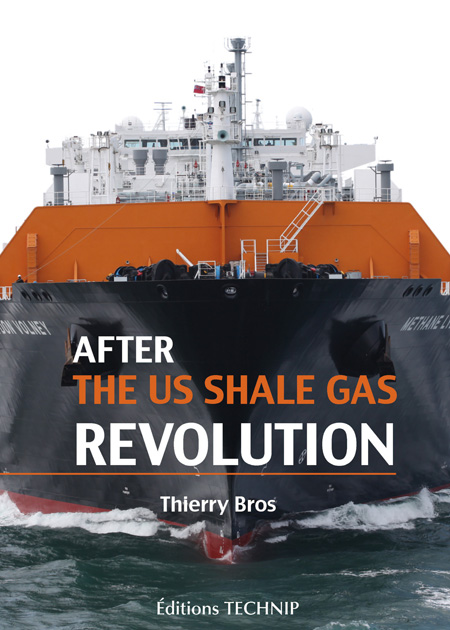After the US Shale Gas Revolution
Authors : BROS Thierry
ISBN : 9782710810162
trade paperback 170 x 240 mm 176 pages
Publication date : August 2012
American buyers

 Add to cart 40 $ (33 €)
Add to cart 40 $ (33 €)
After 20 years at different positions in the gas sector, from the policy side to trading floors, the author gives an overview of the major gas issues and elaborates on the consequences of the US shale gas revolution.
The first part of the book provides basic knowledge and gives needed tools to better understand this industry, that often stands, in sandwich, between upstream oil and utilities.
After extensive research, publication and teaching, the author shares his insights on fundamental issues all along the gas chain and explains the price mechanisms ranging from oil-indexation to spot.
The second part looks into the future of worldwide gas balance. To supply growing markets, the major resource holder, Russia, is now in direct competition with the major gas producer, the US. China has the potential not only to select the winner but also to decide the pricing principle for all Asian buyers in 2020. As China is a new and growing gas importer and has a lower price tolerance than historical Asian buyers (Japan and South Korea), it is highly possible that, against basic geography, China selects waterborne US LNG vs. close Russian pipe gas, to achieve lower import price. Europe, so risk adverse that it won’t be able to take any decision regarding shale gas production on this side of 2020, should see its power fading on the energy scene and would rely more on Russia. Gas geopolitics could tighten Russia stronghold on Europe, on one side, and create a flourishing North America-Asian trade…
This book is accessible to all and will particularly interest readers seeking a global gas perspective where economics and geopolitics mix. It can be read as an economic novel where billions of $ are invested to shape tomorrow energy world or as a geopolitical thriller where Russia and the US compete to impose their respective agenda, leaving China to select the winner…
Contents :
I. Basics. Permanent Sovereignty over Natural Resources. Reserves. Production. Consumption. Net Exporters. Net Importers. Trade Movements on the Rise. II. Technicals. Pipe Transport. LNG Chain. Pipe Gas vs. LNG. Uses. Gas in Primary Energy Mix. Demand Seasonality. Swing Production. Storage. Spare Capacity. III. Markets, Prices & Costs. Many Price Mechanisms… & Many Units. Term Markets. Costs. Europe: from Oil-indexation to spot Markets. Markets can mitigate Winter-Summer Spreads. Markets can Reallocate Supply. Markets can Select the most Profitable Fuel to generate Electricity. Markets Integration? IV. Policies. Cheap Energy allows Development. Secure Energy has been the First Policy Goal as it is Essential to National Security. Clean Energy, if we have the Money! Taxes / Subsidies. Regulation / State Intervention. V. Where is the Future Supply Growth? The US Shale Gas Revolution. China holds the Largest Unconventional Gas Reserves. Europe: Incremental Supply in Poland. Australia could overtake Qatar in LNG, thanks to Unconventional Gas. Russia & Norway: a little more Pipe Gas before the Arctic opening. Other Places. VI. Where is the Future Demand Growth? In Asia, Mainly in China. Finding New Demand for Gas in North America. Not in Europe, unless New Uses are Found. The Future of Oil-linked Contracts. Conclusion: After the US Shale Gas Revolution, the 2020 Gas World. China Needs to secure Extra Gas from 2018e… … When US LNG could be available! Gazprom in the Driving Seat in Europe. The Question of Energy Dependency.

 Partager
Partager
 Tweeter
Tweeter

 Browse the book
Browse the book Read the press kit
Read the press kit Watch a video
Watch a video